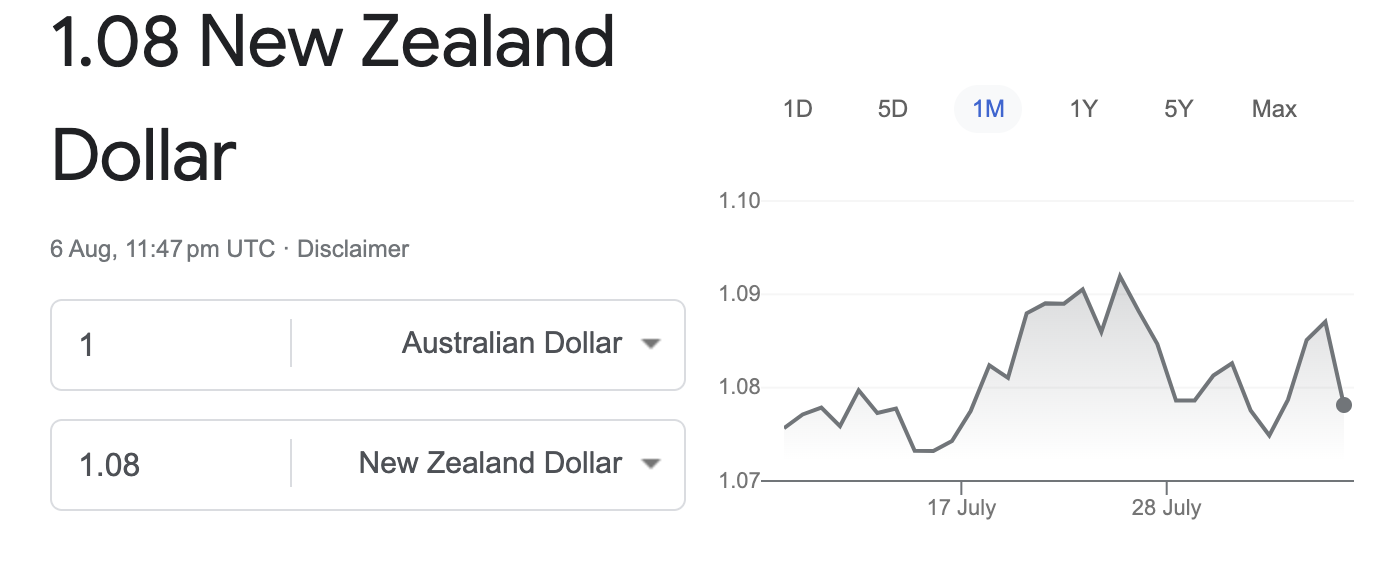Currency Market Update 7th August 2023
Last week, the Australian dollar faced challenges against major currency pairs. The AUD/USD lost 2.11% due to a strong US dollar and positive economic data. The AUD/EUR declined 2.32% as the European Central Bank signaled a potential policy pause. The AUD/GBP fell 2.55% due to a smaller-than-expected interest rate hike by the Bank of England. The AUD/NZD dropped 0.57% due to declining commodity prices and China's slower recovery. However, the resolution of anti-dumping tariffs on Australian barley imports by China provided some support. Overall, sentiment for all AUD pairings remains bearish for the time being.
Let`s dive in for more details.
AUD - USD
The AUD/USD pairing experienced a volatile week, losing 2.11% of its value. Market sentiment suggests a bearish outlook for the Australian dollar against the US dollar in the upcoming week.
Throughout the week, the US dollar gained strength against major peers, including the Australian dollar. Positive labor market data released on Wednesday showed that US private payrolls had risen more than expected in July. Additionally, plans by the US Treasury to increase the size of government bond auctions in the third quarter bolstered longer-dated US Treasury yields, contributing to the strength of the US dollar.
The dollar's upward trajectory was further supported by the resilience of the US economy compared to the rest of the world. Despite a slight increase in the number of Americans filing new claims for unemployment benefits, layoffs fell to an 11-month low in July, indicating a tight labor market. Nonfarm productivity also saw a significant rise, curbing growth in labor costs and improving the US inflation outlook. These factors, combined with the carry trade strategy contributed to the dollar's overall strength.
On the other hand, the Australian dollar found some support as Chinese curbs on Australian barley imports were lifted. This development, along with a risk-on sentiment in the market, helped AUD/USD gain 0.8% during the week. However, this gain was subdued by the Reserve Bank of Australia's (RBA) growth and inflation projections, which likely weighed on market participants' sentiment towards the Australian dollar.
Looking ahead, the sentiment for the AUD/USD pairing suggests a bearish outlook for the Australian dollar in the coming week. The strength of the US dollar, backed by positive economic data and the carry trade strategy, is expected to continue, while the RBA's cautious growth and inflation outlook may weigh on the Australian dollar's performance.
AUD - EUR
The AUD/EUR pairing experienced a significant loss of 2.32% in value last week. The market sentiment suggests a continued bearish outlook for the Australian dollar against the euro in the upcoming week.
The European Central Bank (ECB) recently signaled a potential pause in its monetary policy at the next meeting in September. This decision comes as inflation continues to fall and economic growth weakens in the Eurozone. Such indications from the ECB have likely contributed to the downward pressure on the euro.
In addition to the factors mentioned, another reason for the weakness of the Australian dollar (AUD) against the euro (EUR) is the interest rate differential between the two currencies. The European Central Bank's indication of a potential pause in its monetary policy suggests a less hawkish stance compared to the Reserve Bank of Australia (RBA). This divergence in monetary policy outlooks can influence investor sentiment and contribute to the relative weakness of the Australian dollar. Traders should keep an eye on any shifts in interest rate expectations, as they can have a significant impact on currency valuations in the AUD/EUR pairing.
Looking ahead, the sentiment for the AUD/EUR pairing remains negative, with expectations of further selling pressure on the Australian dollar.
AUD - GBP
The AUD/GBP pairing experienced a notable decline of 2.55% in value last week. The market sentiment suggests a continued bearish outlook for the Australian dollar against the British pound in the upcoming week.
The Bank of England (BoE) raised interest rates by 25 basis points against the expected 50 bps to a 15-year high of 5.25%. This marked the 14th consecutive hike in the current tightening cycle. Sterling remained lower after the BoE opted for a smaller than expected hike, which may have disappointed some market participants who were expecting a larger increase. The perception of a more relaxed approach towards monetary policy direction from the bank has also dampened momentum for the pound.
Looking ahead, the sentiment for the AUD/GBP pairing remains strongly negative, with expectations of further selling pressure on the Australian dollar. The BoE's continued tightening cycle and the relative disparity in future monetary policy between the UK and other regions have been supportive factors for the pound.
AUD - NZD
The AUD/NZD pairing experienced a decline of 0.57% in value last week. The market sentiment suggests a continued bearish outlook for the Australian dollar against the New Zealand dollar in the upcoming week.
The Australian dollar has seen a recovery from its two-month low, despite the Reserve Bank of Australia (RBA) indicating that inflation is heading in the right direction, which reduces the likelihood of further rate hikes.
The decline in the Australian dollar since mid-July can be attributed to declining commodity prices and the slower recovery of China, Australia's key trading partner, from pandemic restrictions.
In its latest policy meeting, the RBA extended its inflation target timeline, indicating a potential for maintaining restrictive monetary policy. The central bank expects inflation to return to the target range of 2-3% by the end of 2025 while downgrading economic growth forecasts for this year.
The decision to keep the policy rate unchanged at 4.1% during the August meeting reflects the board's desire to assess the impact of previous rate hikes on the economy. This decision aligns with Australia's lower-than-expected consumer price index and producer inflation data.
Despite these factors, the risk-sensitive Australian dollar received a boost from the resolution of anti-dumping and anti-subsidy tariffs on Australian barley imports by China as the trade partners work towards repairing strained ties. Additionally, Chinese officials have expressed their commitment to ensuring reasonably ample liquidity in the banking system, reinforcing optimism about Beijing's efforts to support the economy.
Looking ahead, the sentiment for the AUD/NZD pairing remains negative, with expectations of further selling pressure on the Australian dollar. Traders should closely monitor any developments that could impact the exchange rate between these two currencies.
If you’d like to learn more. Reach out to THE EXPATRIATE International Currency Specialist Ian Cragg, from Send Payments.
The Expatriate always tries to make sure all information is accurate. However, when reading our website, please always consider our Disclaimer policy.






